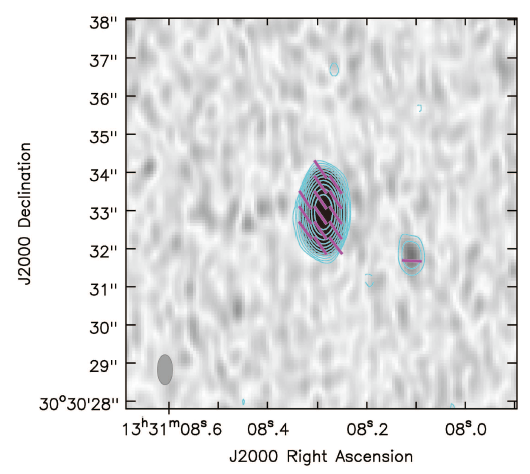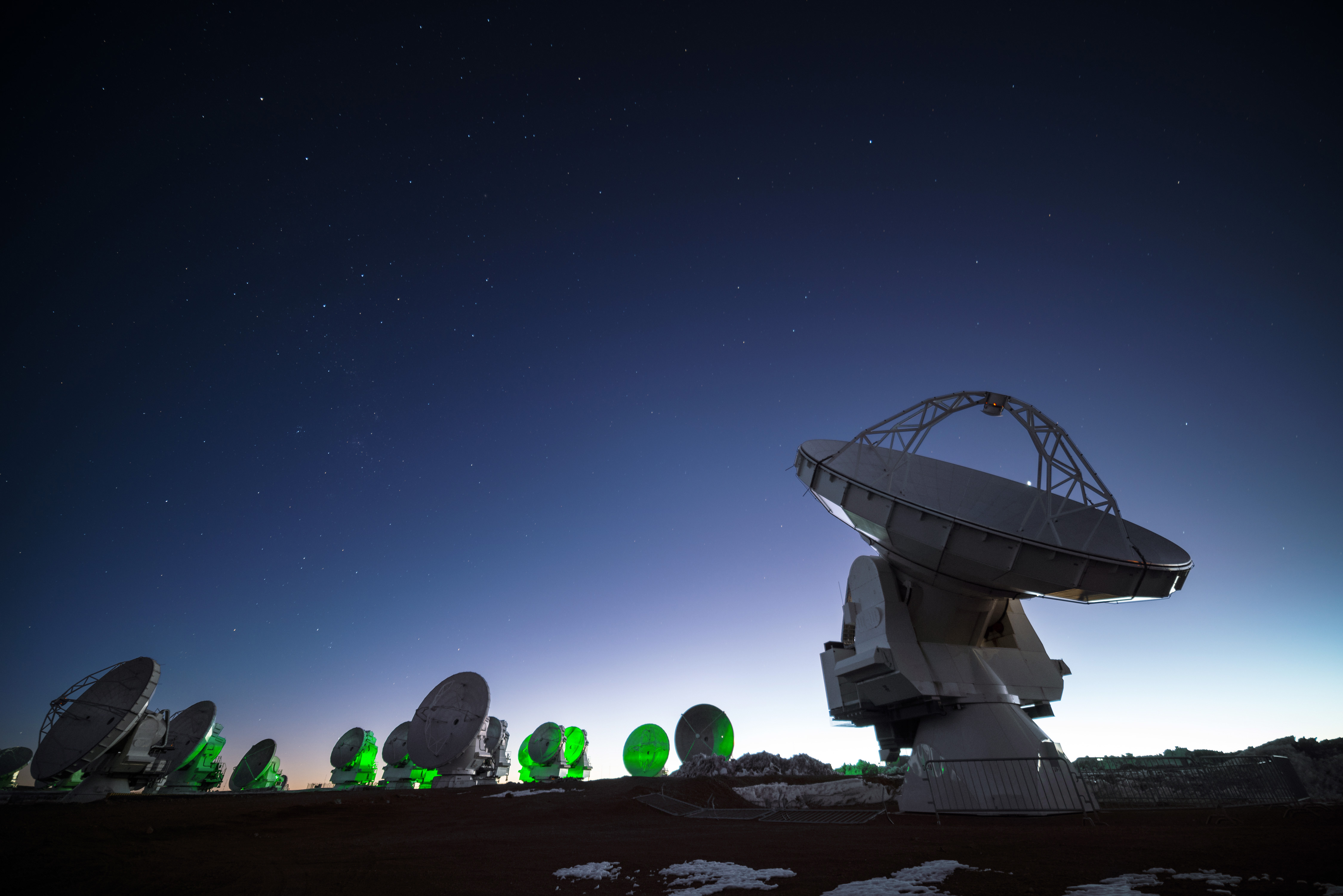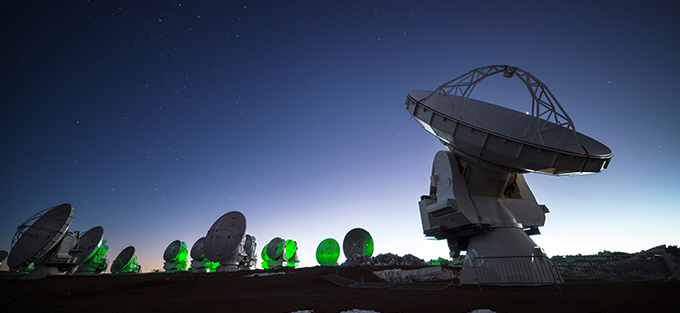ALMA Achieved Highest Polarimetric Sensitivity
18 July, 2016 / Read time: 3 minutes
Researchers have confirmed ALMA’s unprecedented capability for polarimetry in millimeter/submillimeter wavebands. Polarimetry is an important method to investigate magnetic fields in the Universe and astronomers are eager to use ALMA for unveiling magnetic mysteries, such as the launching mechanism of high energy jets from supermassive black holes.
The magnetic field is ubiquitous and plays considerable roles in the Universe. We can find the directions by using a compass thanks to Earth’s magnetic field. Sunspots and solar flares are driven by magnetic fields in the Sun. Magnetic fields are also important in various occasions including formation of stars and planets, and exotic events around black holes. In spite of its significance, measurement of magnetic fields is difficult. Polarimetry is one of the handful methods to investigate magnetic fields in the Universe.
ALMA is designed to perform sensitive polarimetry observations. To verify its capability, astronomers observe well-known objects and compare the results with those of existing telescopes. ALMA started science observations in 2011, but in parallel, science verification activities for advanced observation methods have been carried out.
ALMA observed the bright source 3C 286 for the verifications of polarimetry observations. The source, located 7.3 billion light years away from us, is a quasar, emitting very strong radio waves. Many researchers assume that a supermassive black hole is located in the center of a quasar and intense magnetic fields are responsible for ejecting powerful jets. ALMA pointed to the root of the jet from 3C 286 to measure the intensity and the direction of the polarized wave. The result reveal details not seen before and clearly show that the magnetic field is stronger and more ordered towards the inner region of the jet that emerges from the quasar. This helps researchers to understand the magnetic field structure in the very heart of the quasar, furnishing vital clues about the physical processes that give rise to the radio emission.
“This observation has certainly verified the high capability of the polarimetry observation with ALMA,” said Hiroshi Nagai at the National Astronomical Observatory of Japan and the leader of the verification team. “This is an important milestone for the ALMA project.”
In general, the polarized component is as weak as a few percent of the total radio flux from an object. High sensitivity is essential for the precise polarimetry, and ALMA is suitable for it. The science verification activity includes the establishment of the proper calibration and many test observations have been performed to ensure the high precision. Such behind-the-scenes efforts provide a firm platform for advanced observations with ALMA.

Additional information
These observation results were published by Nagai et al. as “ALMA Science Verification Data: Millimeter Continuum Polarimetry of the Bright Radio Quasar 3C 286” in the Astrophysical Journal issued on 20 June 2016.
The science verification activities for polarimetry is introduced in an article “Polarization observations with ALMA” in the serial column “¡Bienvenido a ALMA!”.
The first scientific results containing ALMA full polarization data were published by the Astrophysical Journal Letters on June 30, 2016, as “Interferometric Mapping Of Magnetic Fields: The Alma View Of The Massive Star-Forming Clump W43-MM1” by Cortés et al.
ALMA is a partnership of ESO (representing its member states), NSF (USA) and NINS (Japan), together with NRC (Canada), NSC and ASIAA (Taiwan), and KASI (Republic of South Korea), in cooperation with the Republic of Chile. The Joint ALMA Observatory is operated by ESO, AUI/NRAO and NAOJ.

Contacts
-
Nicolás Lira
Education and Public Outreach Coordinator
Joint ALMA Observatory, Santiago - Chile
Phone: +56 2 2467 6519
Cel: +56 9 9445 7726
Email: [email protected]
-
Masaaki Hiramatsu
Education and Public Outreach Officer, NAOJ Chile
Observatory, Tokyo - Japan
Phone: +81 422 34 3630
Email: [email protected]
-
Richard Hook
Public Information Officer, ESO
Garching bei München, Germany
Phone: +49 89 3200 6655
Cel: +49 151 1537 3591
Email: [email protected]
-
Charles E. Blue
Public Information Officer
National Radio Astronomy Observatory Charlottesville, Virginia - USA
Phone: +1 434 296 0314
Cel: +1 202 236 6324
Email: [email protected]

